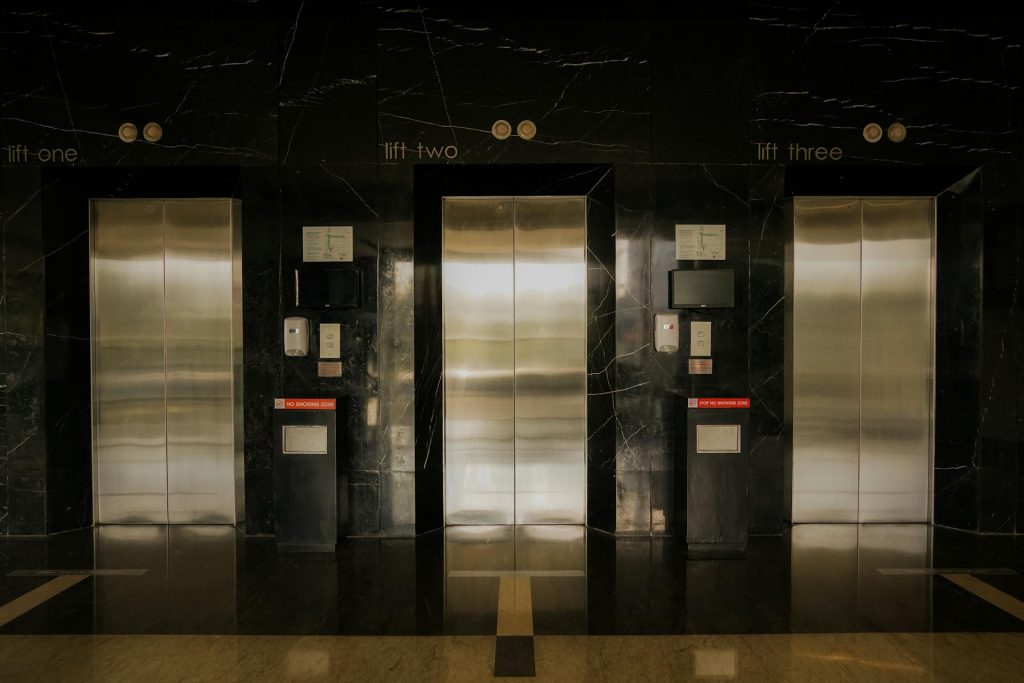In the bustling modern world where time is of the essence and efficiency reigns supreme, the humble elevator plays a crucial role in vertical transportation. However, traditional elevator systems often face challenges in terms of wait times, energy consumption, and overall performance. In this article, we delve into the innovative realm of Smart Elevator Control Systems to explore how they revolutionize vertical transportation in buildings.
Join us on a journey through the intricate workings of these intelligent systems as we uncover their inner mechanisms and highlight the myriad benefits they bring to both building owners and occupants. From enhanced energy efficiency to smoother ride experiences, Smart Elevator Control Systems promise a future where vertical mobility is not just convenient but also sustainable and seamless.
The Evolution of Elevator Control Systems
In the realm of vertical transportation, the evolution of elevator control systems is a captivating journey marked by innovation and technological advancement. Decades ago, elevators were manually controlled by operators who determined the direction in which the elevator would travel and stopped at each floor upon command. This era was characterized by slow operation and limited efficiency.
With the advent of automatic elevator control systems in the mid-20th century, a significant transformation occurred in vertical transportation. These early systems utilized relay logic to determine elevator movement based on button inputs from passengers. The transition to automatic controls enhanced efficiency and introduced features like call buttons outside elevator doors, revolutionizing the user experience.
As technology continued to progress, microprocessor-based control systems emerged in the late 20th century, ushering in a new era of smart elevators. These sophisticated systems utilized computer algorithms to optimize elevator performance, minimize wait times, and improve energy efficiency. The integration of advanced software enabled predictive maintenance capabilities, ensuring smooth operation and enhancing passenger safety.
Understanding Smart Elevator Technology
Enhanced Efficiency and Performance: Smart elevator technology utilizes advanced algorithms and sensors to optimize elevator usage. By analyzing passenger traffic patterns, the system can predict peak times and adjust elevator routes accordingly, reducing wait times and energy consumption.
Integration of IoT and Artificial Intelligence: Smart elevators are equipped with IoT capabilities, enabling seamless communication between elevators, building systems, and even smartphones. This integration allows for remote monitoring, predictive maintenance, and personalized user experiences based on individual preferences.
Data Analytics for Continuous Improvement: The heart of smart elevator technology lies in data analytics. By collecting and analyzing vast amounts of data on usage patterns, maintenance needs, and performance metrics, building managers can make informed decisions to enhance efficiency, safety, and overall building operations. This data-driven approach ensures continuous improvement in elevator functionality.
Benefits of Smart Elevator Control Systems
Smart Elevator Control Systems offer a myriad of benefits that revolutionize the way elevators operate within buildings, enhancing efficiency, sustainability, and user experience.
Improved Energy Efficiency
One of the primary benefits of smart elevator systems is their ability to optimize energy consumption. By utilizing sensors and algorithms to anticipate traffic patterns and adjust elevator movements accordingly, these systems reduce unnecessary trips and idle time, leading to significant energy savings for the building.
This increased energy efficiency not only lowers operational costs but also contributes to a more sustainable environment by reducing the building’s overall carbon footprint. Smart elevators play a crucial role in promoting green practices within modern infrastructure.
Enhanced User Experience
Smart Elevator Control Systems prioritize user comfort and convenience through advanced features such as destination dispatching, personalized floor selection options, and reduced wait times. These innovations streamline the vertical transportation process, providing passengers with a seamless and enjoyable ride experience.
By incorporating predictive maintenance capabilities, smart elevators minimize downtime due to unexpected malfunctions, ensuring reliable service for occupants. This focus on user satisfaction not only improves daily commutes but also fosters a positive perception of the building’s overall quality and efficiency among tenants and visitors.
Data-Driven Insights
Another significant benefit of smart elevator systems is their capacity to gather valuable data on usage patterns, performance metrics, and system health in real-time. By analyzing this data, building managers can make informed decisions regarding maintenance schedules, traffic flow optimization, and future upgrades.
This data-driven approach enables proactive maintenance strategies that prevent potential issues before they occur, ultimately extending the lifespan of elevator components and enhancing system reliability. The insights derived from smart elevator analytics empower buildings to operate more efficiently while continuously improving service quality for occupants.
How to Implement Smart Elevator Control Systems
1. Planning and Assessment: Before implementing smart elevator control systems, conduct a thorough assessment of the building’s layout, traffic patterns, and user needs. This initial planning phase is crucial to determine the number of elevators required, the optimal locations for sensors and control panels, and any necessary structural modifications.
2. Technology Selection: Selecting the right technology for smart elevator control systems is essential. Consider factors such as connectivity options, compatibility with existing building systems, data security measures, and scalability for future upgrades. Collaborate with reputable providers to ensure the chosen technology aligns with your building’s requirements.
3. Installation and Integration: Once the technology is selected, execute a seamless installation process under expert supervision. Ensure proper integration with building management systems for centralized monitoring and control. Conduct thorough testing to validate system functionality and performance before transitioning to full operational use.
Optimizing Building Management with Intelligent Elevators
Implementing smart elevator control systems can significantly optimize building management processes. By incorporating intelligent elevators, building managers can efficiently monitor and track elevator usage patterns, maintenance needs, and energy consumption. This data-driven approach allows for proactive management strategies that enhance the overall efficiency of the building.
Intelligent elevators can also contribute to streamlined traffic flow within buildings, reducing wait times and improving tenant satisfaction. By utilizing predictive maintenance algorithms, these systems can identify potential issues before they escalate, minimizing downtime and ensuring smooth operations. This proactive approach not only enhances the building’s performance but also extends the lifespan of elevator components.
Furthermore, intelligent elevators integrated with building management systems enable real-time communication between elevators and other building systems such as fire alarms or security systems. In case of emergencies, these interconnected systems can swiftly respond to ensure occupants’ safety. This seamless integration enhances the overall safety and security measures within the building, providing peace of mind for both tenants and building managers.
Enhancing User Experience with Elevator Automation
Imagine a world where waiting for elevators becomes a thing of the past. With elevator automation, this vision is becoming a reality. By utilizing smart technology and advanced algorithms, elevators can predict user demand and adjust their operations accordingly.
One of the key components of enhancing user experience with elevator automation is reducing travel time. By optimizing elevator routes based on real-time data and user patterns, passengers can reach their destinations faster and more efficiently. This not only saves time but also improves overall satisfaction and productivity.
Furthermore, elevator automation can enhance safety features by incorporating touchless controls and sensors to minimize physical contact within the elevator cabin. This not only provides peace of mind to users but also aligns with current health and safety standards in a post-pandemic world. Elevator automation is not just about efficiency; it’s about creating a seamless and secure experience for all users.
Smart Elevator Control Systems in Action
Eco-Friendly Operations: Smart elevator control systems are revolutionizing building efficiency by reducing energy consumption and carbon footprint. By analyzing traffic patterns and optimizing elevator usage, these systems can significantly decrease energy costs while promoting sustainability. Imagine a world where buildings operate seamlessly while simultaneously contributing to a greener environment.
Enhanced Security Measures: In today’s fast-paced world, safety is paramount. Smart elevator control systems incorporate advanced security features such as biometric scanners, facial recognition technology, and real-time monitoring to ensure the well-being of passengers. With these state-of-the-art solutions in place, occupants can feel reassured knowing that their safety is prioritized at every step of their journey.
Data-Driven Decision Making: One of the most compelling aspects of smart elevator control systems is their ability to gather and analyze vast amounts of data in real time. Building managers can utilize this information to make informed decisions regarding maintenance schedules, traffic flow optimization, and performance tracking. This data-driven approach not only enhances operational efficiency but also paves the way for continuous improvement and innovation.
Case Studies: Real-Life Examples of Success
Sky Tower – Dubai, UAE
The Sky Tower in Dubai implemented a state-of-the-art smart elevator system to enhance efficiency and user experience. By utilizing destination dispatch technology and predictive maintenance algorithms, the tower significantly reduced wait times and energy consumption. This success story showcases how innovative elevator control systems can revolutionize vertical transportation in modern skyscrapers.
Pearl Tower – Shanghai, China
The Pearl Tower in Shanghai integrated smart elevator control systems to manage the complex traffic flow of its multiple high-speed elevators. Through real-time data analytics and machine learning algorithms, the tower achieved seamless vertical transportation for its occupants while optimizing energy usage. This case exemplifies how cutting-edge technology can streamline operations in high-rise buildings.
Torre Reforma – Mexico City, Mexico
Torre Reforma in Mexico City adopted an intelligent elevator system that adjusted lift operations based on user patterns and building traffic. By incorporating biometric access control and destination prediction algorithms, the tower improved security measures and reduced waiting times for tenants. This real-life example demonstrates how smart elevator solutions can elevate both convenience and safety in urban environments.
Future Trends in Elevator Technology
As technology continues to advance at a rapid pace, the future of elevator technology holds exciting prospects. One major trend on the horizon is the development of self-learning elevators. These intelligent systems will analyze user patterns and traffic flow to optimize elevator operations, resulting in improved efficiency and reduced wait times for passengers.
In addition, eco-friendly elevators are set to become increasingly prevalent. Manufacturers are focusing on designing elevators that consume less energy, utilize sustainable materials, and minimize environmental impact. By embracing green technology, the elevator industry is not only contributing to a greener planet but also reducing operational costs for building owners.
Another key trend in elevator technology is the integration of Internet of Things (IoT) capabilities. Elevators equipped with IoT sensors can provide real-time data on performance metrics, maintenance needs, and even user feedback. This interconnectedness enables proactive maintenance strategies and enhanced safety features, ensuring a smoother and more reliable vertical transportation experience.
Conclusion
As we conclude our exploration of Smart Elevator Control Systems, it is evident that the integration of intelligent technology in vertical transportation systems is revolutionizing the way we move within buildings. The seamless operation, energy efficiency, and enhanced user experience provided by smart elevators are just the beginning of a new era in urban mobility. Embracing these advancements not only streamlines building operations but also contributes to a more sustainable and sophisticated urban landscape.




